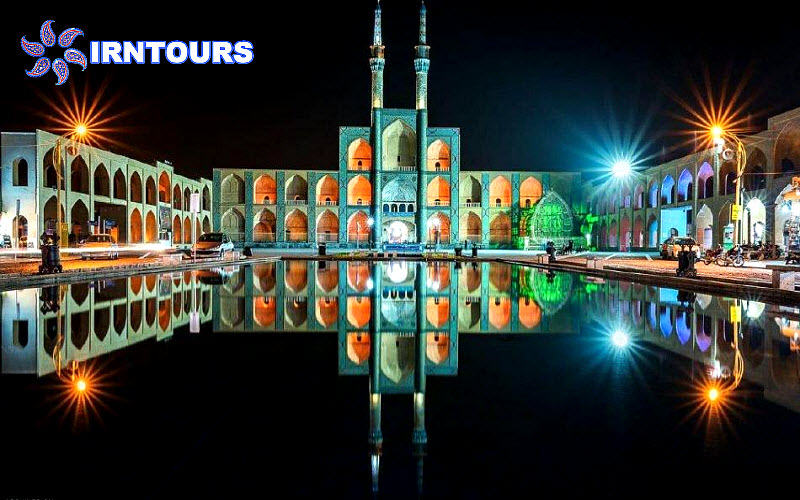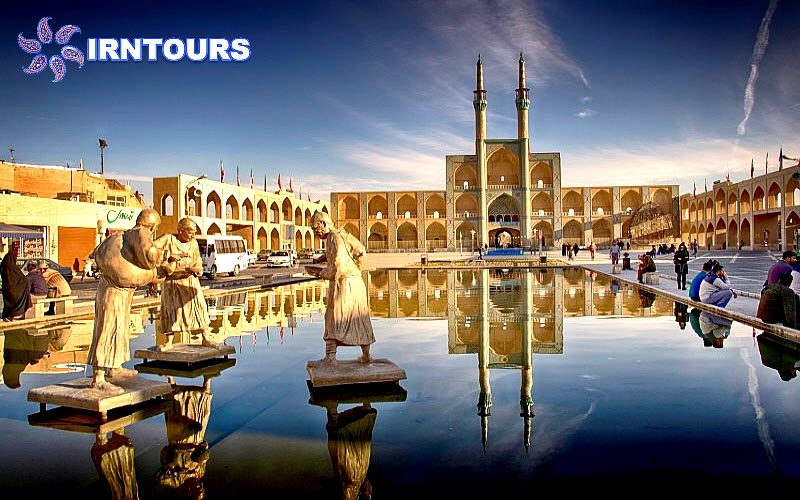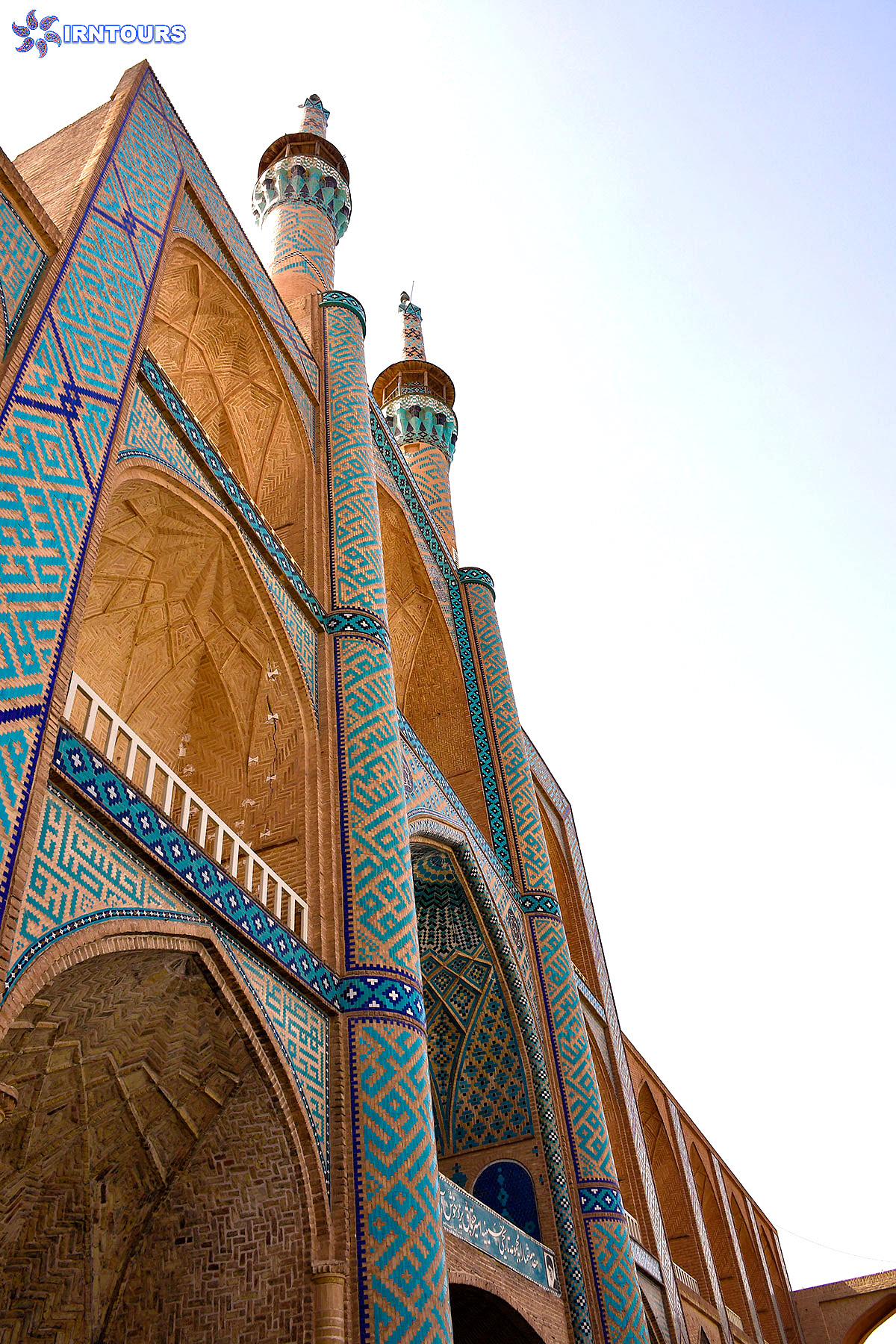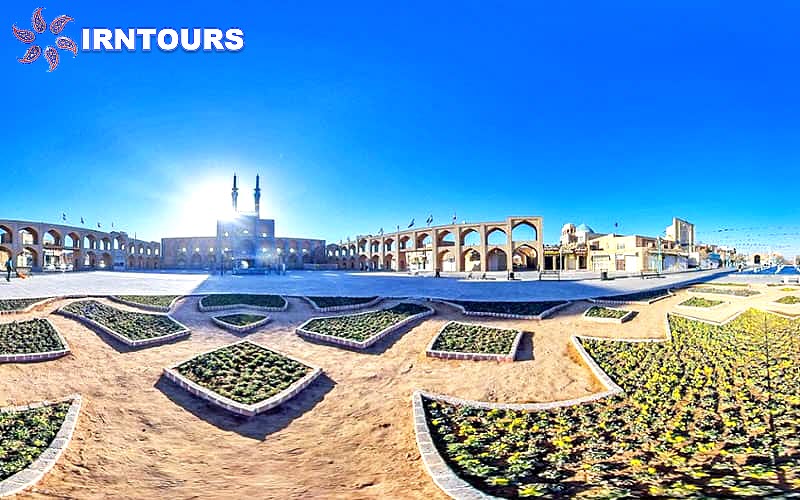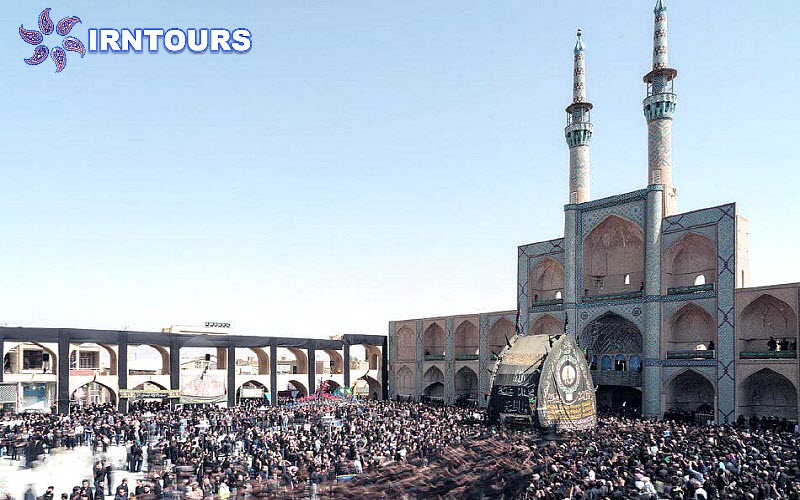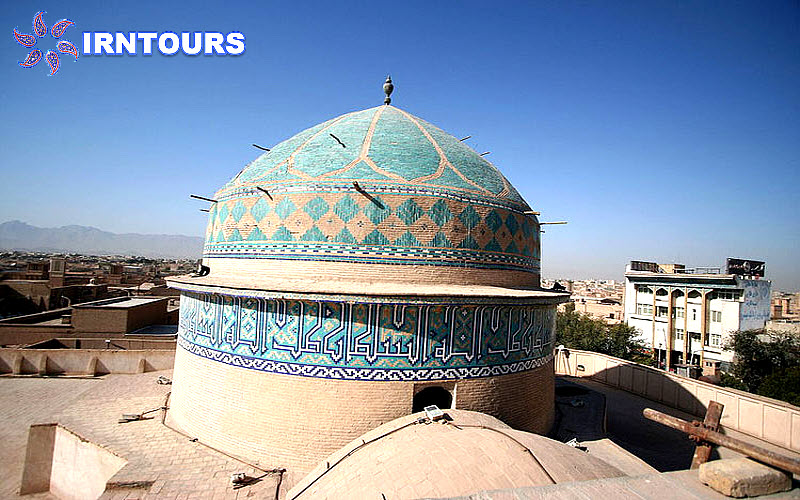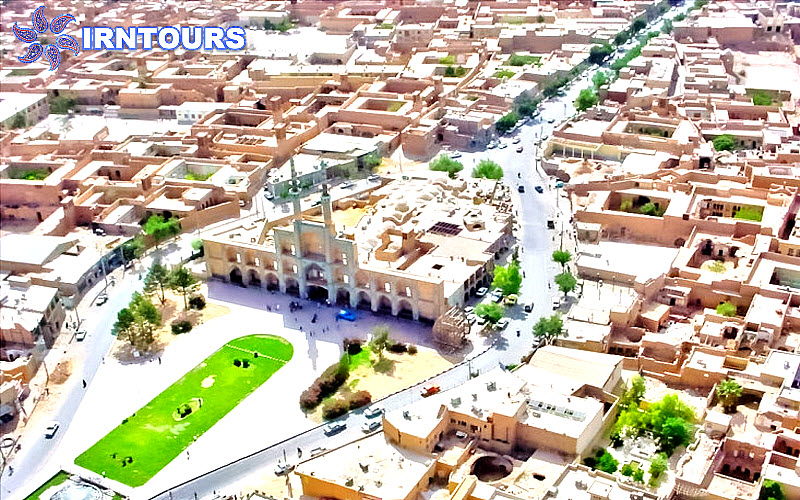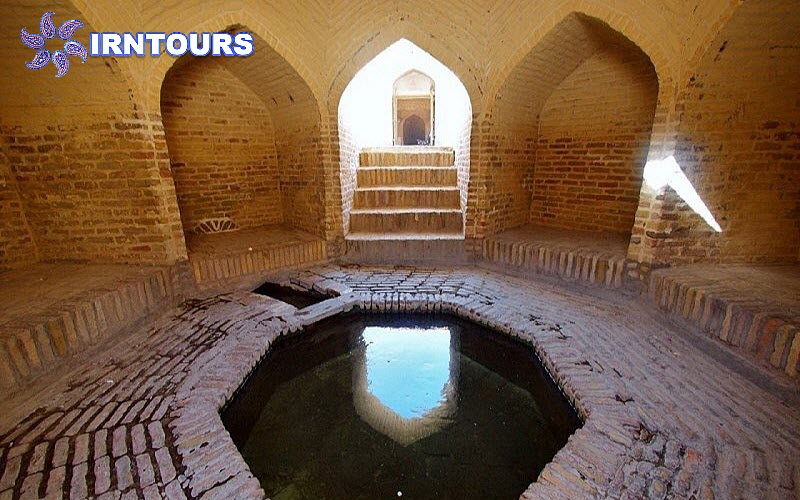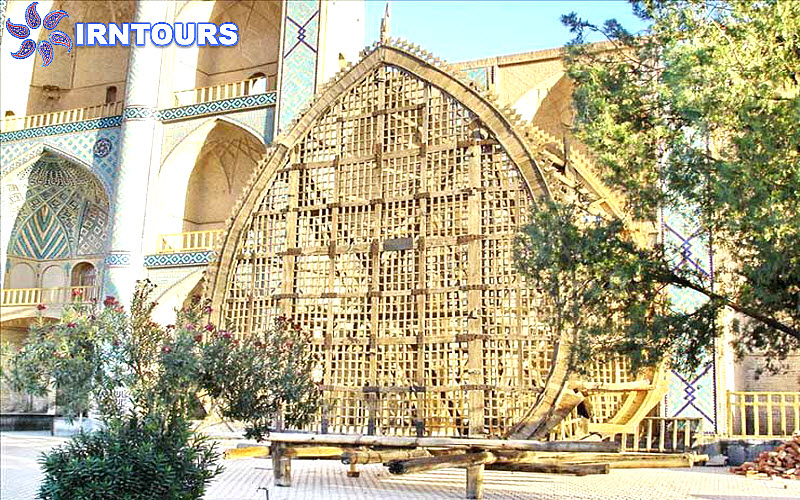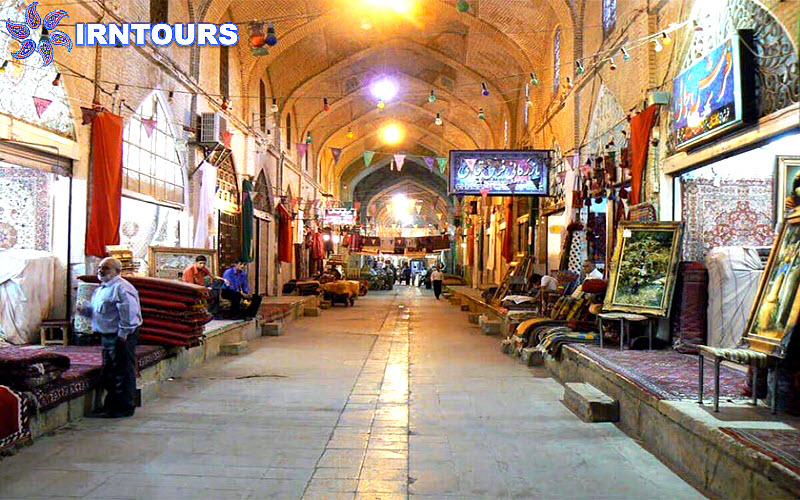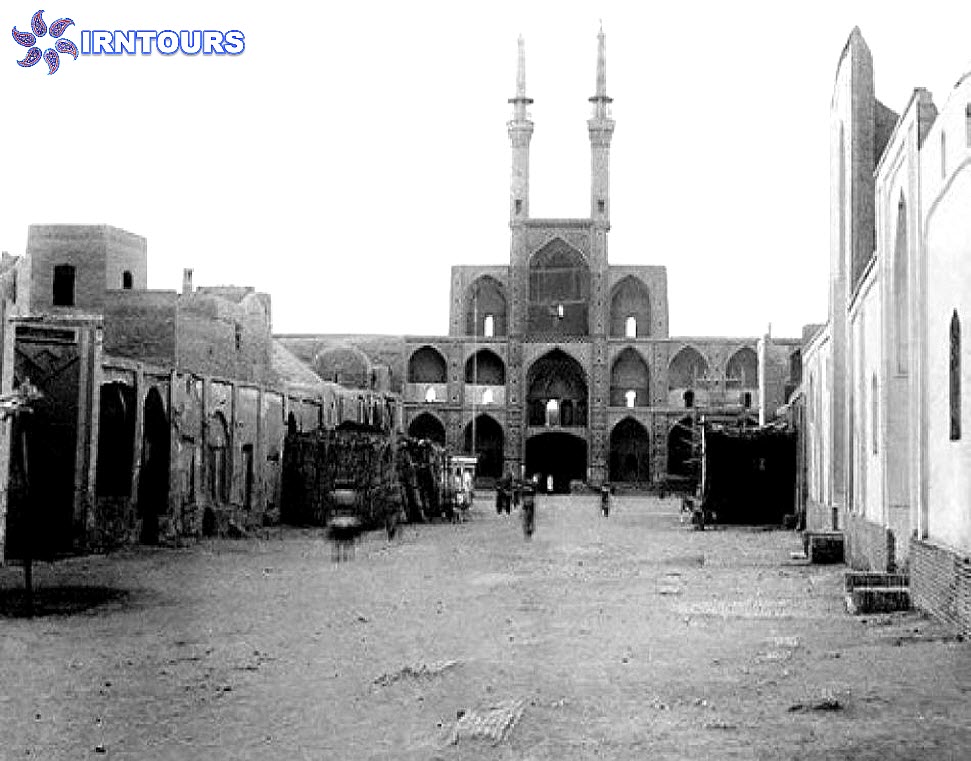
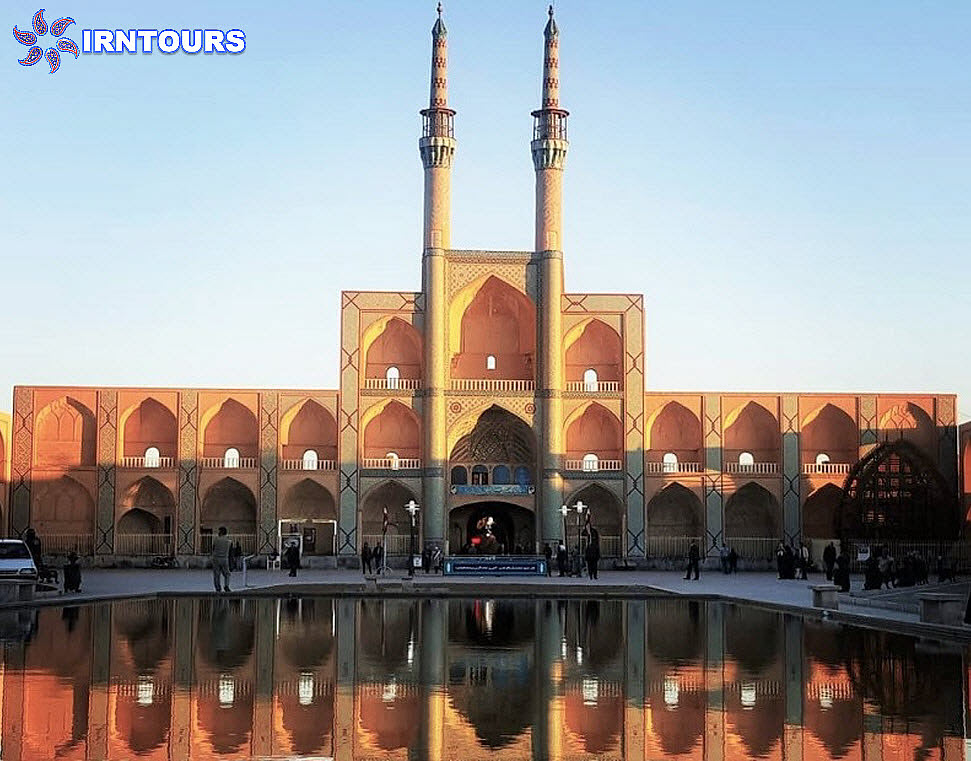
About Amir Chakhmaq Square
Amir Chakhmaq Square is one of the most famous tourist places in Yazd and is considered one of the historical squares of the country, which shines like a gem in the old context of this city. This square, which contains many attractions from the market to the mosque and the mosque, is considered an excellent option for tourism; Especially during the night, which presents a very beautiful landscape in front of you. The most attractive part of this square is its three-storied building that attracts the attention of tourists before any other attraction. Join us to learn more about this spectacular square.
Amir Chakhmaq Square or Amir Chakhmaq is considered one of the most prominent sightseeing places in Yazd, which has been registered in the list of national monuments of Iran and consists of different parts such as bazaar, takeh, mosque and reservoir. Shaaban caravanserai on the north side of Hammam Square and Bafti caravanserai on the west side of Amir Chakhmaq are other attractions of this complex. In front of the support, there is a large pond with a fountain and several statues, which refers to the role and importance of water and Saqqai culture.
This square, which the Yazidis call Mirchakhmaq, is used as one of the main squares of the city to hold various programs and gatherings. One of the most popular religious programs of this square, which attracts many tourists, is the palm turning ceremony in the month of Muharram, which is held magnificently every year.
This square is the symbol of Yazd city and you can visit it at any hour of the day. Especially during the night when its special lighting shows a different effect of this attraction.
Where is Amir Chakhmaq Square?
- Amir Chakhmaq Square is located next to Shohada Crossroads on Imam Khomeini Street and along Salman Farsi Street.
- Address: Yazd Province, Yazd City, Imam Khomeini St., Amir Chakhmaq Square
The History of Amir Chakhmaq Square
Amir Chakhmaq Square is a remnant of the Timurid era in the 9th century AH, which was built by Amir Jalaluddin Chakhmaq, one of the generals of Timurid Shahrukh. After reaching the position of governor of Yazd, together with his wife Seti Fatemeh, he started to build a new Jame Mosque in the “Sofla Dohuk” and built a large square in front of it. This mosque and the square were later known as Amir Chakhmaq Mosque and Amir Chakhmaq Square. The ruler of Yazd also built other buildings around the square, such as a reservoir, a bakery, a market, a monastery, a caravanserai, a bathhouse, a cold water well, etc.
The square in front of the mosque and the main bazaar was converted into Hosseinieh in the early 13th century. Although at that time, Hosseinieh was not used; Because the construction of such spaces became popular in Iran from the Safavid period. During the time of Shah Abbas Safavi, this square underwent changes and renovations, such as the construction of a square on the caravanserai. A person named Haji Hossein Attar also initiated the restoration of parts of the mosque and the expansion of its courtyard during the reign of Feth Ali Shah Qajar.
The mentioned square, like some other squares in the country, had become a burial place for the dead before the Pahlavi period, and some people used to bury their dead bodies here under the pretext of the existence of Hosseiniyeh and its blessings. However, with the beginning of the Pahlavi period, this custom was abolished and after the destruction of the graves, Amir Chakhmaq Square returned to its former state.
During Reza Shah Pahlavi’s time, many changes took place in the square, among which we can mention the street fights. This issue caused the formation of a small square and the integration of the mosque with the square in front of Hosseinieh. Other changes and transformations also occurred in this complex over time, as a result of which only the southeastern body remained as the only wall of the square, which is the main body of Amir Chakhmaq’s support.
Who is Amir Chakhmaq?
Amir Jalaluddin Chakhmaq Shami was one of the amirs and generals of Timurid Shahrukh who was appointed to the government of Yazd in 1432. Inspired by Shahrukh’s kingdom, he took valuable measures for the development of Yazd city, and his wife Seti Fatemeh or Fatemeh Khatun was also with him in this way.
The construction of New Jame Mosque, two water reservoirs and a support which was outside the city of Yazd at that time and today is known as Amir Chakhmaq Square complex, was a part of his charitable activities. Digging a well near the New Jame Mosque and reviving the water in the Dohok neighborhood, building a hot water heater in front of the Kabir Jame Mosque in Yazd, building a brick pulpit with Islamic motifs in the Jame Mosque, improving the condition of the Garden of the Rulers of Yazd, etc.
.
Sights of Amir Chakhmaq Square
Place of mourning on Amir Chakhmaq : This three-story place of Amir Chakhmaq, which was registered in the list of national monuments of Iran in 1951, is located on the east side of the square, which was once used for kings to sit in the throne room and women in other pavilions to watch mourning and palm-picking ceremonies. . This landmark structure is famous for its exterior with arched palaces.
There is an inscription in the pavilion of Shahneshin Takiye which shows the date of 1842, so it can be estimated that it is about 180 years old. This brick structure has two large minarets, which are said to have been added during the Qajar period.
The remaining part of the main wall of Amir Chakhmaq has pavilions that are stacked on top of each other. These pavilions are in the form of two-story arches in eight vertical rows, which are built parallel to each other. In addition, there are three-story pavilions in two vertical rows and a main pavilion in one vertical row in the middle. The middle part of the building is decorated with tiles and has a higher height than other arches. It seems that this place was probably for the establishment of the highest government officials in the center of Takiye, so that they could watch the tazee ceremony in the middle area of the square.
The high minarets of this structure, which are built on the middle pavilions, have given it a special glory and grandeur; Besides, in the past, these minarets were used to call the call to prayer and announce the prayer time to the people of the city.
Amir Chakhmaq Mosque is located right next to this building, and through one of the stalls on the west side of the tekeh, you can access the square reservoir. In the middle of this building is the entrance to the Haji Qanbar market.
Amir Chakhmaq Mosque : Amir Chakhmaq Mosque, which is also known as Dohok Mosque and New Jame Mosque, is located after Yazd Jame Mosque in terms of beauty, size and importance, thanks to its decorations such as mosaic tiles and moqrans arches. This mosque, which was registered in the list of national monuments in 1962, was built by Amir Chakhmaq in two years and its construction work was completed in 1462.
The mentioned mosque has two entrances, which include the eastern (mosque alley) and northern (square) entrances. In the kiryas (building in front of the entrance door) of the mosque, a stone with inscriptions containing the text of a waqf name has been installed, and on both sides of the northern corridor leading to the courtyard of the mosque, delicate grids of mosaic tiles can be seen in the windows.
This mosque has a summer and winter nave, the beautiful wind deflectors in the summer nave cool the air on hot summer days. The winter nativity scene is decorated with marble, which warms the atmosphere in cold winter days due to the reflection of sunlight.
On the girdle of the dome of the mosque, the words “Al-Sultan Dzal-Allah” are engraved in Kufic calligraphy, and on both sides of its surface, you can see two flowers with inscriptions in Kufic script, one of which is decorated with the words “Wali Allah Al-Tawfiq” and the other is an Arabic phrase that no one has ever seen. Failed to read it.
Another inscription of the mosque can be seen on the eastern front, which is written in the third line and with mosaic tiles. The cracked dome of the mosque is also decorated with inscriptions and in addition to the green tiling, there is an inscription in Kufic script around it.
Amir Chakhmaq Mosque has no minaret, which according to one tradition, mosques founded by women did not have minaret, and according to another tradition, it was for the unity of Shia and Sunni; Because Shiite mosques had two minarets and Sunni mosques had one minaret, and as a result, they built it without a minaret so that the followers of both religions could use it.
Reservoirs in Amir Chakhmaq square : In general, there have been three reservoirs in the complex of Amir Chakhmaq Square, one of which was located on the south side of the square; But it was destroyed during the construction of the street.
Seti Fatima Reservoir : Seti Fatemeh Reservoir (Panj Badgiri) is located on the north side of the square and next to the Haji Ghanbar Bazaar, which was built for people’s use by the order of Seti Fatemeh, the wife of the then ruler of Yazd. In addition to the dome and the beautiful brick headland, this building has five long eight-sided windbreaks, which are among the few reservoirs with five windbreaks in Yazd. After the covered part of the entrance, there is a staircase that includes two parts, the soldier and the covered part. Amir Chakhmaq Reservoir has a trestle-type arched roof and a tank with a circular plan, and from its two entrance doors, one opens to Amir Chakhmaq Square and the other to the alley where the reservoir is located. This beautiful structure was registered as a national monument of Iran in 2005.
Since the development and change of the water supply system had led to the abandonment of this reservoir, in 2001, the reservoir was changed to Zorkhaneh Sahibul Zaman, Yazd, which was done with the efforts of Pahlavan Ali Derhami.
Amir Chakhmaq Reservoir : Amir Chakhmaq Reservoir, which was used until 40 years ago, has now become a part of the Yazd Water Museum. This reservoir and Haji Qanbar bazaar were built by order of Nizamuddin Haji Qanbar Jahanshahi during the time of Amir Chakhmaq.
The said reservoir has an entrance and through 50 steps you can reach the tap and the water collection point. The cistern of the reservoir with a diameter of 9 meters is dug at a depth of 14 meters and its roof is the ground floor of the bazaar. This reservoir has four quadrilateral wind deflectors, two of which can be seen from the roof of the bazaar. Until now, its three windbreaks have been restored and restored in their original form.
The reservoir has unique features; So that its entire body is on the ground and even its air conditioning dome is embedded in the ground and only the tip of the dome is on the ground. The windbreaks of the reservoir are also significantly different from the windbreaks of other reservoirs and are placed in the body of the wall of Bazarche Haji Qanbar. The staircase of most reservoirs leads to the middle of the treasury; An issue that does not apply to Amir Chakhmaq reservoir and its staircase is located next to the treasury; Because probably, in order to connect the staircase to the middle of the treasury, they had to empty the minarets, which would reduce the minarets’ endurance.
Amir Chakhmaq Palm : A palm tree is a large wooden coffin that is symbolically used in one of the mourning ceremonies of Muharram called the palm tree ceremony, and one of its spectacular examples, known as the Heydari palm tree, is located in Amir Chakhmaq Square. It is said that this palm dates back to 1813 in the Safavid period; Therefore, some consider it the oldest palm tree in Yazd.
This huge wooden palm with a height of 8.5 meters, which looks like a cypress tree (a symbol of freedom), is considered one of the largest palms in Yazd province and is made up of a network of Chinese knots and large beams.
Tomb of Seti Fatima :Seti Fatemeh or Bibi Fatemeh Khatun was the wife of Amir Jalaluddin Chakhmaq Shami and was one of the noble women of her time who was known for her kindness and chastity. He and his wife built many public buildings, including Amir Chakhmaq Grand Mosque, Garmaba, Khanqah, Rabat, Caravanserai, digging several wells, etc. He also built the tomb where he was buried after his death, and this tomb is located in an alley on the north side of Amir Chakhmaq square.
This tomb consists of a domed room decorated with green tiles; In addition, its internal coating is made of plaster and marble tiling can be seen in its moqrans.
Haji Qanbar market : Haji Qanbar market is a part of Amir Chakhmaq collection, which is dedicated to selling items such as cloth, sweets, gold and carpets. This indoor market is considered one of the oldest parts of Yazd city, which, in addition to its unique architecture, is decorated with beautiful tiling decorations.
The said market was built by Nizamuddin Haji Qanbar Jahanshahi, the ruler of Yazd during the period of Jahanshah Qara Quyunlu, and for this reason it is known as Haji Qanbar Bazaar.


